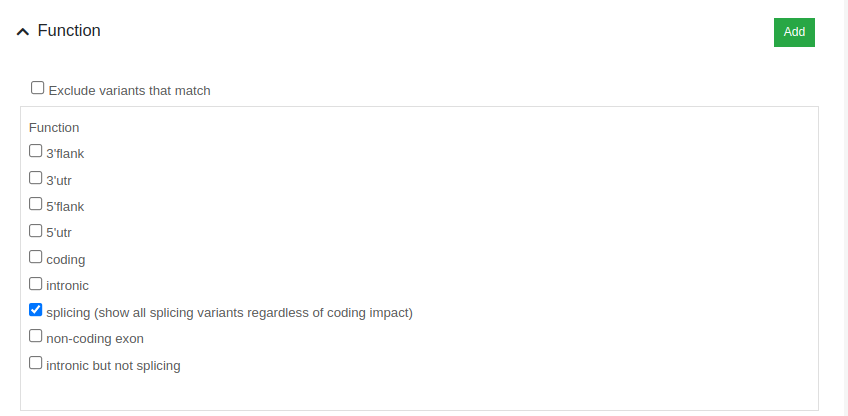Splicing Annotation in VarSome's Germline Variant Classification implementation
Splicing information is used by our Germine Variant Classification implementation to decide whether some rules should be applied or to boost their strength.
We use the scSNV as well as MaxEntScan databases for splice-site prediction. This is only available for single-nucleotide variants. Variants above the 'ADA Boost Splicing' threshold (0.708) and 'Random Forest Splicing' threshold (0.515) are considered candidate splicing variants. The scSNV splice-site prediction is used in the following rules:
- BP7: A synonymous (silent) variant for which splicing prediction algorithms predict no impact to the splice site consensus sequence nor the creation of a new splice site AND the nucleotide is not highly conserved. (Benign, Supporting). The splicing is checked as follows:
- The variant is found more than 2 bases away from the next splice site.
- It is not predicted splicing according to the scSNV database or MaxEntScan predictor.
- PP3: Multiple lines of computational evidence support a deleterious effect on the gene or gene product (conservation, evolutionary, splicing impact, etc.) (Pathogenic, Supporting).
We exceptionally boost the strength to 'Very Strong' if the variant is predicted splicing and rule PVS1 was not triggered.
Splicing is also considered in rule:
- PVS1: null variant (nonsense, frameshift, canonical ±1 or 2 splice sites, initiation codon, single or multiexon deletion) in a gene where LOF is a known mechanism of disease. (Pathogenic, Very Strong).
In PVS1, intronic variants within 1 or 2 nucleotides from the exon of the transcript splice site are considered null variants as defined in this paper.
Filtering splicing variants in VarSome Clinical
Splicing variants can be filtered using the dynamic filters feature. The algorithmic filter "exonic & splicing" also includes a criterion to keep splicing candidates. When filtering a splicing variant in VarSome Clinical, we will consider variants located +/- 10 bp of a known splice site.

